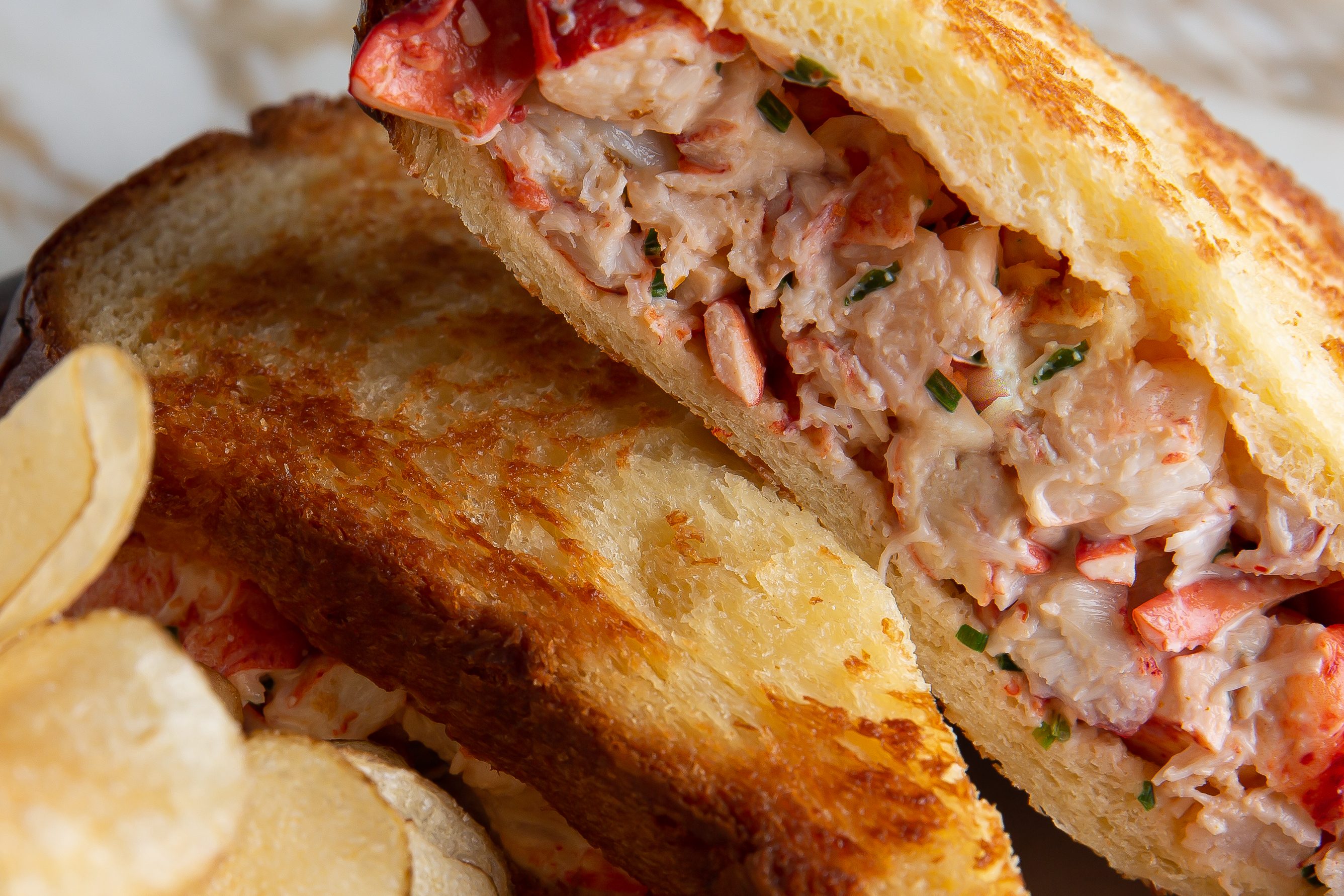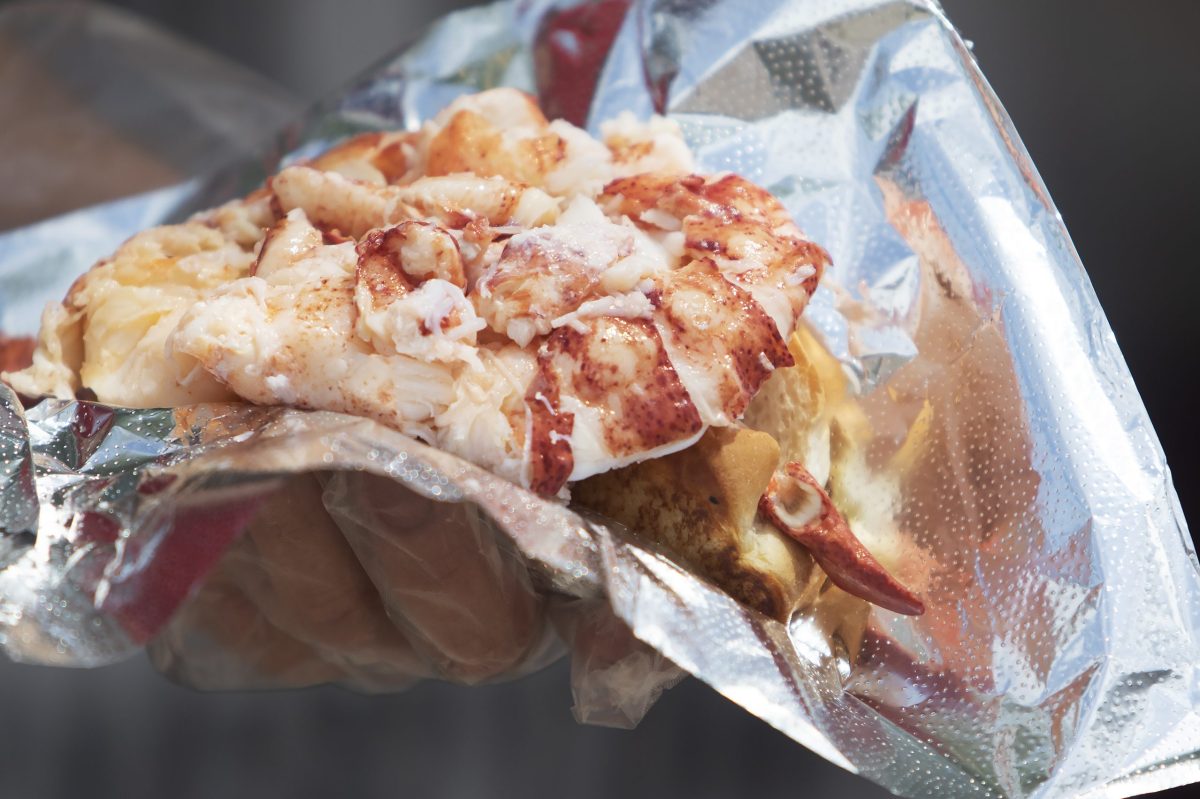Though Maine and Connecticut are separated only by a relatively quick drive through New Hampshire and Massachusetts, there’s a world of difference between their approach to one of New England’s signature dishes: the lobster roll.
Served on a hot dog bun, the traditional Maine roll is made with cold lobster meat that’s been tossed with mayo and sometimes has pieces of celery mixed in for some crunch. While also served on a bun, the roll made two states to the south is served with warm lobster meat that has been dressed with butter and usually nothing else.
“As the story goes, back in the late 1800s or early 1900s, a man goes into a restaurant in Connecticut and says he’s dying for a hot lobster sandwich,” Peter Jarvis, the New England native behind Peter’s Florida Seafood, tells InsideHook. “The owner of the restaurant fires up some lobster meat and sandwiches it between two slices of bread, but then realized the heat of the butter would make the bread fall apart and the lobster fall out. They figured out they could prevent that with a roll.”
Jarvis, who had his first lobster roll when he was just five or six while on summer vacation with his family in Cape Cod, has been a fishmonger for decades but never got around to trying a Connecticut-style lobster roll until last year, at a New England-style restaurant in Ft. Lauderdale.
“After growing up on the Maine style lobster roll, I took a bite and said ‘What? You gotta be kidding me,” he says. “It’s so different from the cold, crisp, refreshing experience of eating a Maine lobster roll. I don’t dislike it, but I don’t know that I would ever try it again.”
That type of allegiance to one roll or the other is quite common, possibly because mayonnaise is a somewhat polarizing ingredient.
Citarella owner and fishmonger Joe Gurrera, who had his first lobster roll on the east end of Long Island following a day at the beach with his family when he was a kid, prefers a Connecticut roll.
“I love for the flavor of my fresh seafood to always shine through,” says the veteran fishmonger. “When I make a Connecticut-style roll, I keep the seasonings light, allowing for the natural sweetness of the lobster to be the main focus of the dish.”
Mary Attea, the head chef at the Michelin-starred Musket Room in New York City, did not grow up eating lobster rolls in her hometown of Buffalo and never had one until she moved to NYC and went to a Luke’s Lobster location.

“While I love both variations for different reasons, I lean towards Maine lobster rolls,” Attea says. “I love the chilled meat in the warm summer months, the way the coolness contrasts with the soft, warm bun. Obviously, the mayonnaise is the quintessential ingredient of the Maine roll, but I absolutely love a touch of tarragon. I think it is a must-have. The richness of the mayo, the burst of lemon, and the hints of chive and tarragon bring it all together for me.”
At the Musket Room, Attea serves a take on the lobster roll that calls for Japanese milk bread in the style of a sandwich. “Something comparable would be a brioche or Pullman loaf,” she says.
Though Attea’s lobster sandwich does have mayo, it is not as heavily doused with the controversial condiment as the typical Maine roll. “I think there is a fine line between not enough and too much. You want it to enhance the lobster, not overpower it,” she says. “There is a fine balance for everything, but at the end of the day, you really want the lobster meat to be the star of the dish.”
You can find Attea’s recipe for the Musket Room’s New York-style lobster sandwich below.
Lobster Sandwich on Japanese Milk Bread
Ingredients
- Lobster mix
- Juice from 1/2 lemon (to taste)
- 1 tbsp chopped chive/tarragon mix Pinch cayenne
- 1 egg yolks
- 100 g grapeseed oil 5 g lemon juice Splash water
- Salt
Directions
Mayonaise: Separate egg yolk into a medium-sized bowl. Very slowly whisk in the oil a few drops at a time until an emulsified, thick mayonnaise begins to form. As it thickens, add a few drops of water to thin it out and continue to emulsify the oil into it. You can start to stream the oil a little faster once it forms the mayonnaise, but be careful not to add it too fast or the mayonnaise can break. Once you finish emulsifying the oil, add lemon juice and salt to taste. Use 2-3 tbsp mayonnaise on your sandwich. (If you don’t want to make it, substitute Hellman’s.)
Lobster mix: Buy freshly picked Maine lobster meat from a reputable fish market or buy a live lobster and cook in boiling water for 8 minutes. Chill in the refrigerator for 1-2 hours and then pick the tail, claw and knuckle meat. Then, to make the lobster mix, chop the fresh lobster meat and mix with mayonnaise, lemon juice, cayenne pepper, herbs and salt. Adjust seasoning to taste.
Bread: Melt some butter in a pan over medium heat and brown the bread on whichever sides will be the outer facing part of the sandwich (or the sides of the hot dog roll). After you’ve toasted the bread, pile your lobster mix onto it, spreading evenly.
Every Thursday, our resident experts see to it that you’re up to date on the latest from the world of drinks. Trend reports, bottle reviews, cocktail recipes and more. Sign up for THE SPILL now.


















